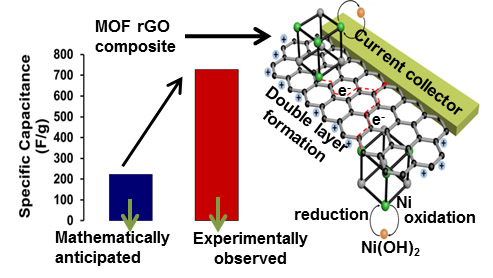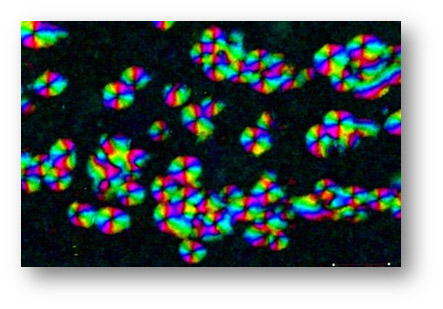Over the Horizon Research
Ionic Industries also has several early stage technologies that we plan to pursue and which we consider have enormous potential: graphene metal organic frameworks and graphene spheres.
Graphene-Metal Organic Framework
In 2015, the Monash research team made an important breakthrough in energy storage research. The breakthrough presents a unique way of converting an insulator into a high performance energy storage material. The project demonstrates yet another extraordinary characteristic of graphene and shows enormous promise for our ongoing energy storage solutions.
In May 2015, this breakthrough was published by the respected American Chemical Society (ACS) publications. The paper is titled “Electrochemical Capacitance of Ni-Doped Metal Organic Framework and Reduced Graphene Oxide Composites: More than the Sum of Its Parts” and has appeared in ACS Applied Materials and Interfaces.

In the quest to discover new, light weight, high-performance materials for efficient chemical storage of renewable energy, our team at Monash discovered that a composite of a porous material – a Metal Organic Framework – with graphene unexpectedly starts to store chemical energy through a rather unique and efficient redox reaction. Redox reactions are part and parcel of most batteries and our recent discovery can unlock the use of graphene in improving the use of renewable energy. In this particular case, graphene plays a supporting role by improving the electrical conductivity of the material. The Monash team showed that a simple chemical tailoring dramatically improves the charge storage capability of the porous material. Furthermore, the Monash team discovered that addition of reduced graphene oxide (rGO) significantly reduces the resistance of the system, improves the power delivery, and enhances the electrochemical capacitance of the system.
The capacitance of this composite is almost three times larger than the algebraic sum of contributions from the porous material and rGO. An efficient charge transfer process from the synergy between the interconnected graphene nanosheets and the chemically modified porous material realizes materials with energy density of 37.8 Wh/kg at a power density of 226.7 W/kg and large stability during cycling. These metrics are comparable to current literature standards in Ni-hydroxide based super-capacitors.
These research findings are likely to catalyse further research across the wide family of MOFs known today as tuneable energy storage and delivery materials. We expect this to further strengthen our position in the energy storage market and drive future evolution of our supercapacitor products.
Graphene Spheres
As with any research endeavour, the process of scientific discovery often yields unexpected and valuable results that go beyond the scope of the initial research task. This was the case with the Ionic research team’s success in identifying that graphene oxide sheets can change structure to become liquid crystal droplets spontaneously and without any specialist equipment. This characteristic is likely to have many implications for the application of graphene technologies, in particular it may be used to great effect in medicine and human health or specifically in drug delivery and disease detection.

Graphene oxide sheets can change structure to become liquid crystal droplets spontaneously
Because graphene droplets change their structure in response to the presence of an external magnetic field, they could be used for controlled drug release applications. Drug delivery systems often use magnetic particles, which are very effective but they can’t always be used because they can be toxic in certain physiological conditions. In contrast, graphene doesn’t contain any magnetic properties. This combined with the fact that it can be changed into liquid crystal simply and cheaply, strengthens the potential application in a new kind of drug delivery system.
Usually atomisers and mechanical equipment are needed to change graphene into a spherical form, however in this case, all the team did was to put the graphene sheets in a solution to process it for industrial use. Under certain pH conditions they found that graphene behaves like a polymer – changing shape by itself. The surprise discovery happened during routine tests.
The ability to spontaneously change the structure of graphene from single sheets to a spherical assembly is hugely significant. It was not previously thought that this was possible. This new research proves that it is and paves the way for future research to see if it changes when exposed to toxins, potentially paving the way for new methods of disease detection as well.
The findings from the research were published in the journal ChemComm.
